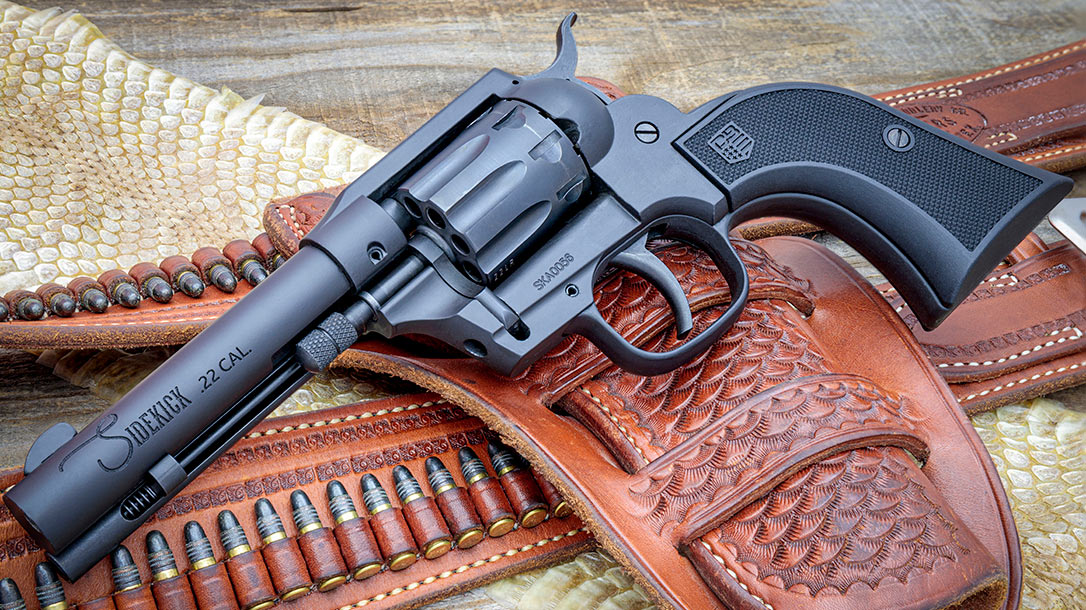Back in the day, Hollywood had a fixation on the “fast gun” in many of its Western films. Sometimes an actor couldn’t manipulate a single-action revolver like the Colt Single Action Army (SAA) quickly enough. So, they would sometimes substitute it with a double action (DA) revolver made to look like a single action (SA) revolver. This was easily accomplished by adding a fake ejector rod housing on the right side of the barrel. There may or may not have been other cosmetic changes. And the movie makers counted on the audience, taking little notice of the sixgun in the hand of the star. Similarly, the Sidekick from Diamondback Firearms features an equally deceiving appearance.
The Diamondback Sidekick Rimfire Revolver
Apparently, movie-goers were either more gullible back then, or the movie producers thought they were anyway. Using the fake gun, all the actors had to do was pull the trigger for the first and subsequent shots. No thumb-cocking is required.
Interestingly, in 1957 the High Standard Manufacturing Corp. introduced a .22 rimfire (RF) revolver called the Hi-Standard Double-Nine. This medium-sized revolver looked a lot like the six-shooters used in the prime-time TV shows and movies of the era. This was no doubt a marketing ploy.
Advertisement — Continue Reading Below
But, looks were deceiving. This was actually a DA revolver with all the appearances of a SA revolver, just like Hollywood. It had the ejector rod housing, front sight, hammer, and grip shape of a “cowboy” six-gun. However, it had a nine-shot cylinder that swung out to the left on a crane/yoke. Not to mention a center pin, actual ejector rod. These guns proved popular and were made into the 1980s.
Enter the Diamondback Sidekick
How many of you reading this magazine are familiar with Diamondback Firearms? Established in 2009, they’re pretty new to the American firearms scene. Their first product was the sub-compact DB380 .380 ACP pistol. From there, they developed a similar-sized 9mm, the DB9, and then branched off into AR-10 and A15 platform rifles and pistols. The Diamondback Sidekick is their first venture outside self-loading firearms designs.
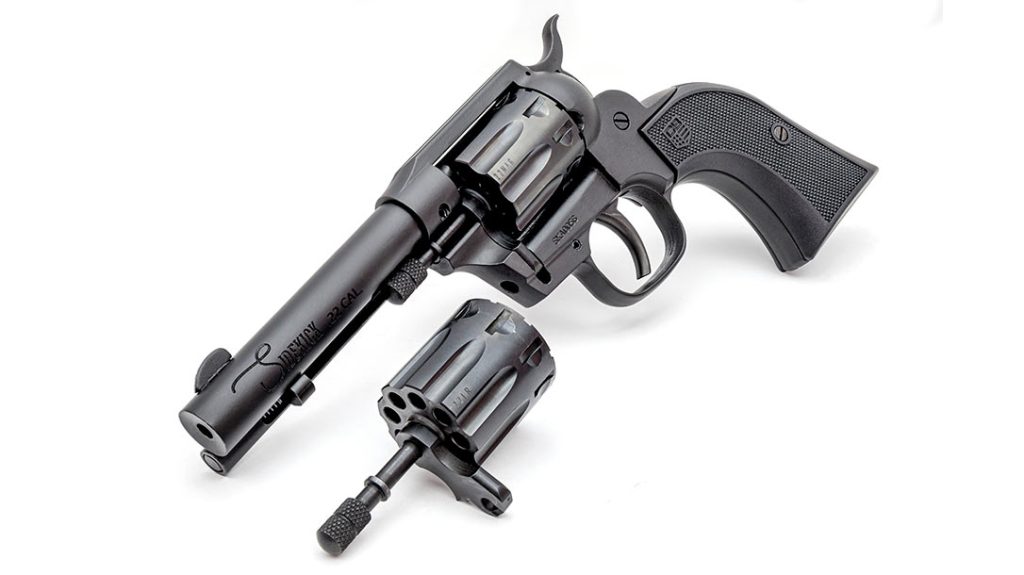
Advertisement — Continue Reading Below
The opening of this article covered the Hi-Standard Double-Nine (DN) for a good reason. From all outward appearances, the DB Sidekick (DBS) is a virtual replication of it.
Notable differences are the standard DN had a 5.5-inch barrel, the DBS has a 4.5-inch barrel. Likewise, the DN had a blue finish, the DBS has a black Cerakote finish. In addition, the DN had a rear sight dovetailed into the top-strap of the frame, the DBS has a fixed notch rear sight cut into the top-strap. Finally, the DN had smooth wood grips, while the DBS has finely checkered, black polymer grips.
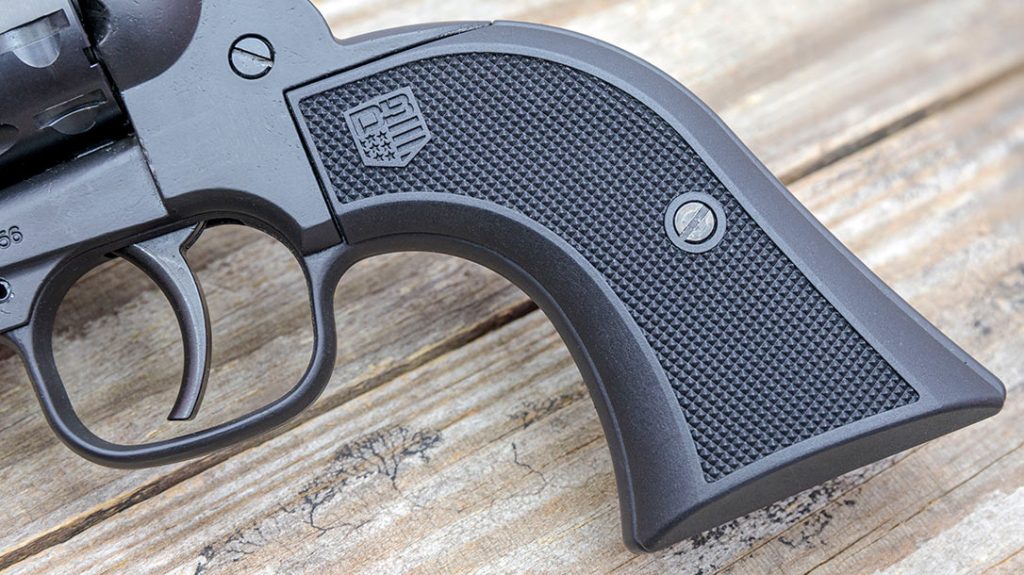
Advertisement — Continue Reading Below
The frame on the DN was made of steel while the DBS frame is fashioned from zinc. Both revolvers have steel barrels, cylinders, and internal parts. A final commonality is that the two revolvers had/have an extra cylinder chambered for the .22 WMR (Magnum) cartridge.
Gun Details
My test sample DB Sidekick came in a cardboard box, much like the original Double-Nine. Inside is a cutout for the .22 WMR cylinder along with a safety padlock and an owner’s manual. Taking the revolver out of the box, I gave it a visual once over and noted that the metal-to-metal and metal-to-polymer fit was satisfactory.
The zinc frame/grip frame has obvious mold marks and roll pins were used instead of solid steel pins in the frame. The Cerakote finish helps to blend all the parts together into a non-reflective black. This is aided by the black, two-piece, checkered grip panels.
Advertisement — Continue Reading Below
While this wheelgun has a traditional DA/SA mechanism, it is meant to be used primarily in the SA mode. The SA pull weight is in the 5-pound vicinity and fairly crisp. This is aided by the ¼-inch wide, smooth-faced trigger.
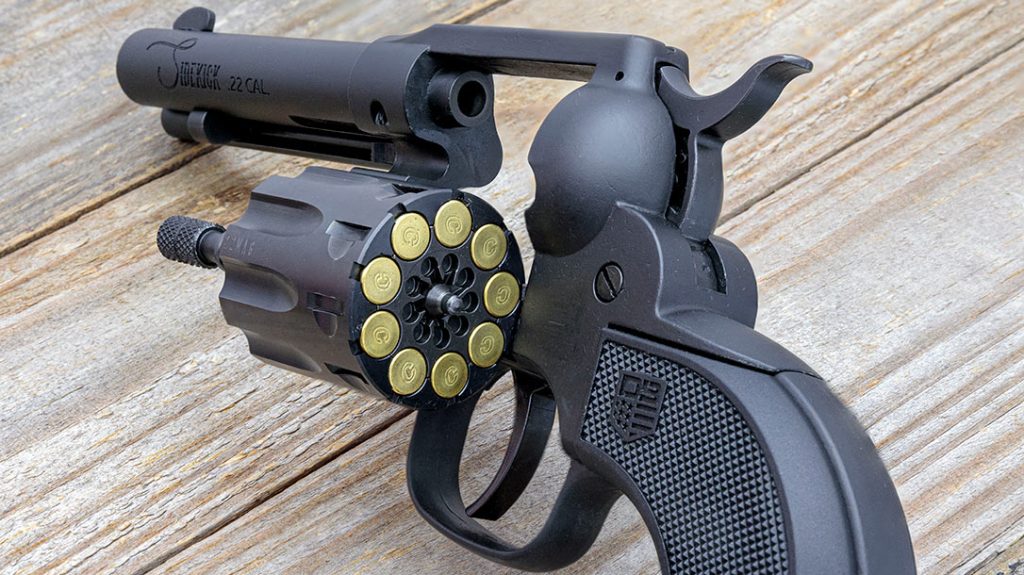
The DA pull is, in a word, heavy and “cap-gunish.” Best to use the DA mode only at close range for emergency purposes. Lockup was good, and there were no evident action problems.
Advertisement — Continue Reading Below
Loading the Diamondback Sidekick
The new DBS not only has counterbored chambers but a small square notch or window cut-out on the outer portion of each chamber. This serves as a loaded chamber indicator. It also allows a certain amount of dry-firing (usually a no-no with rimfires) as this cut-out prevents the frame-mounted, inertia firing pin from striking the rear of the cylinder.
The cylinder unlocks to swing out for loading in two ways. The knurled ejector rod head can be manually pulled forward for method #1. Or the protrusion on the ejector latch rod can be pushed forward for method #2.
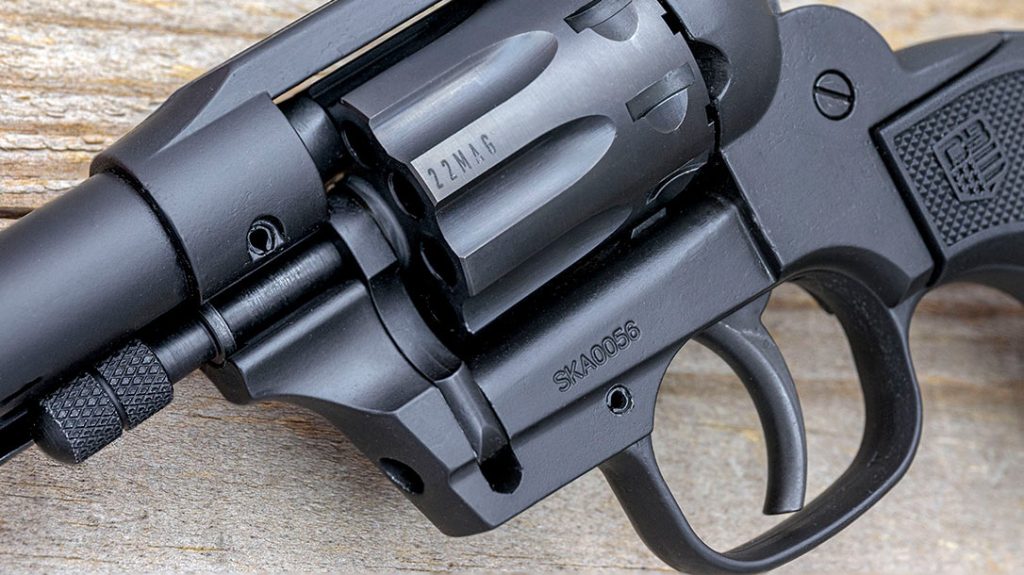
Advertisement — Continue Reading Below
Cylinder removal for replacement with the .22 WMR cylinder is fairly uncomplicated and takes little time. I suggest buyers read the owner’s manual regarding this operation because you could lose a spring-loaded part if done improperly.
Prep Time
Given the current state of affairs, I was lucky to have a fairly good stock of .22 rimfire cartridges in my ammo locker. I decided to use four different brands of .22 LR and two different brands of .22 WMR ammunition in my DB Sidekick evaluation.
From CCI, I had Mini-Mag .22 LR with a 40-grain Segmented HP bullet. In .22 Magnum, I had CCI Maxi-Mag with a 40-grain JHP bullet. My .22 LR load from Federal was the Hunter Match with a 40-grain HP bullet.
Advertisement — Continue Reading Below
Next in .22 LR was Thunderbolt cartridges from Remington that have a 40-grain RN solid bullet. Then from Winchester, I had their M22 brand, which has a 40-grain RN copper-plated, black-colored solid bullet. Lastly, in .22 WMR was Hornady’s Critical Defense, which has a 45-grain FTX-HP bullet that has a good reputation for expansion in past tests I’ve done.
Pairing with “Cowboy” Leather
Because the DBS has the Old West looks, I wanted to pair it was some “cowboy” leather. I searched through a couple of tubs containing my Old West leather collection and came up with a nice outfit from El Paso Saddlery.
The cartridge belt is their “Texas” model that is often referred to as a Ranger style. Mine is 2.25 inches in width, russet-colored with a dark brown suede inner lining, border stamping, and an octagonal, clip-cornered nickel-plated buckle.
Advertisement — Continue Reading Below
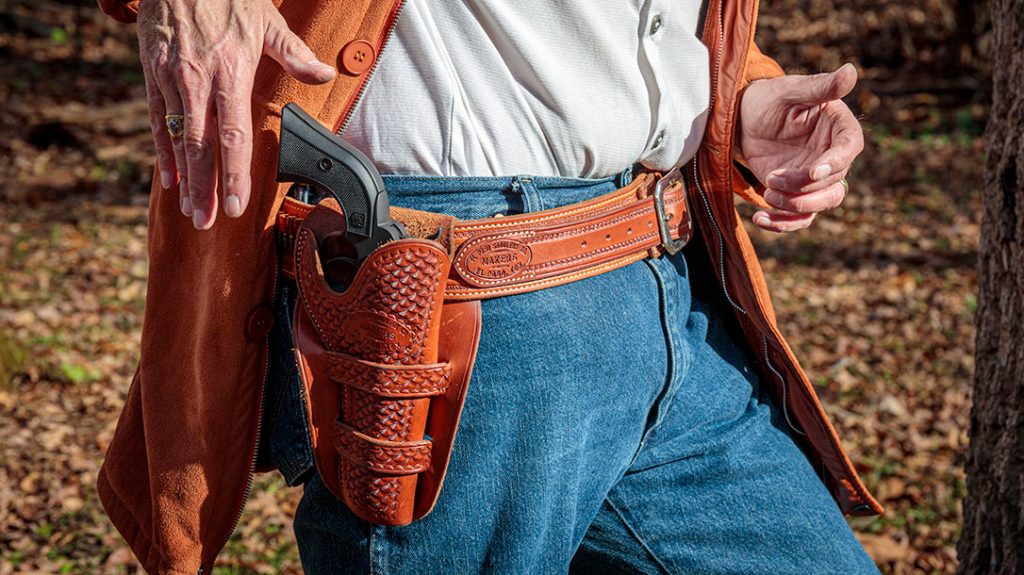
When asked how many .22 cartridge loops I wanted on the belt, I asked how many they could put on. I’ll tell you this, I can put a whole box of 50 on that belt! The holster I found fits the DB Sidekick to a T. It is the Model 1880 “Ranger.”
It’s a classic Mexican double loop with a wide skirt, made for right-side, butt-to-the-rear carry. Mine is russet-colored, unlined, and has attractive and eye-catching fish scale stamping. Both belt and holster are lock-stitched, and hand-finished. You could not ask for a nicer rig.
Target Selection
For targets, I went with Birchwood Casey. They make a new Dirty Bird target that is a 12-inch (diameter) standard 25-yard slow-fire pistol target used by bullseye competitors. It has a light OD green color with five- and six-point scoring rings. Then seven, eight, nine, 10, and X scoring rings that are black in color.
When a bullet strikes the green portion of the target, the bullet hole is surrounded by a black “halo,” and a hit in the black produces a white “halo.” This makes bullet impacts, even with a .22, easy to see.
I also brought a Birchwood Casey Shoot-N-C B-27 Center target. These are used on police-type silhouette targets and work along the same lines as the Dirty Bird. However, the bullet holes have a yellow “halo.”
Down Range
I couldn’t believe we were having an early December day in the mid-60s with no rain and little wind. My first order of business was to set up my Oehler Model 35P chronograph, as I wanted to see what kind of velocities I’d get from the DBS’ 4.5-inch barrel using the .22 LR and .22 WMR ammo.
Only the Remington .22 LR cartridges had “High Velocity” printed on the box. But the CCI, Federal, and Winchester loads had factory velocities listed at 1,235, 1,200, and 1,255 fps, respectively.
What I got velocity-wise from this ammo through the DBS barrel was somewhat less than expected. The highest bullet speed average of the four was 983 fps with the Federal load. Correspondingly, the slowest was 824 fps with the Remington Thunderbolt. The .22 WMR reading was more impressive and you can see all the velocity data in the performance table.
Testing the Sidekick’s Accuracy Potential
To test the Sidekick’s accuracy potential, I put my targets down range at 15 yards and shot from atop a sandbag resting on a wood bench. With the fixed rear sight and rounded front sight blade, I felt this was a practical shooting distance.
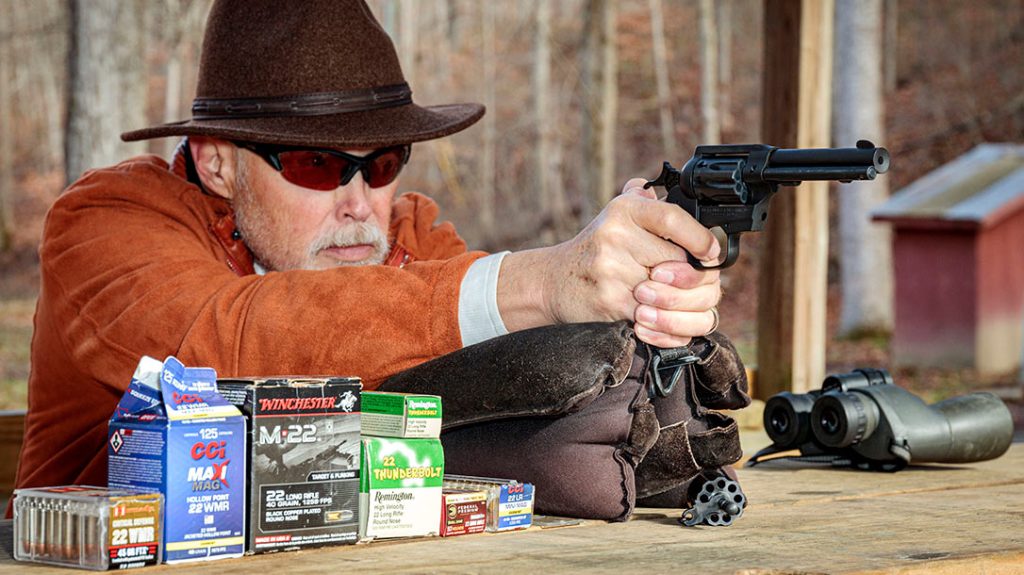
With each of the test cartridges, I fired three five-shot groups in the SA mode. I had two Dirty Bird targets on my portable stand, one tacked over top of the other with the bottom and top edges touching.
My first shot was with the CCI Mini-Mag .22 LR ammo, and I aimed dead-center of the bullseye on the top target. After the shot, I looked down-range and couldn’t see the bullet hole. I got out my binoculars and then discovered that the bullet had hit inside the black bullseye of the target beneath it!
That meant the point-of-impact (POI) was some 11 inches below the point-of-aim (POA). That was the way it went with the .22 LR and .22 WMR cartridges for the entire benchrest shooting session. Therefore, I had to make adjustments.
Overall Performance of the Sidekick
The best group of the day measured 1.67 inches and was made using the Winchester .22 LR, M22 cartridges. Second place in .22 LR went to the Federal Hunter Match with a 1.77-inch, five-shot cluster. Some of the groups were ruined by what I called a “soft shot.”
You could hear the softer-sounding shot distinctly, and usually, the bullet would “keyhole” the target. Sometimes it would strike inches away from the rest of the group. I’m not sure of the source of this problem, I suspect it could be an oversize bore. This would also explain the low-velocity figures and the huge variance between POA and POI.
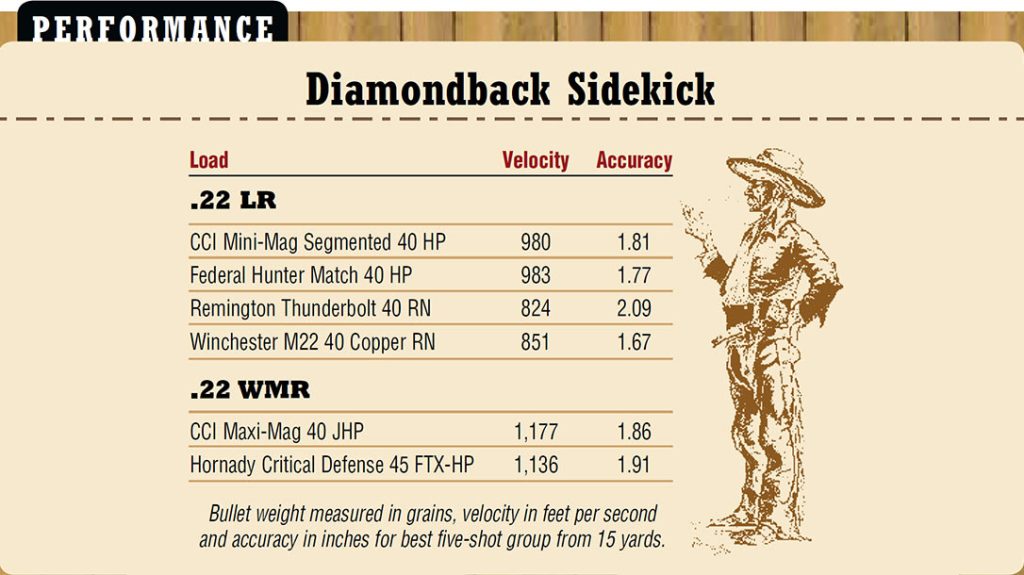
However, this did not happen with the .22 WMR cartridges. Their velocities seemed more normal, and there was no keyholing or “soft shots.”
The best .22 WMR group measured 1.86 inches with the CCI Maxi-Mags. Also of note, I had two misfires with the Federal .22 LR cartridges.
Swapping the Cylinders
Swapping the .22 LR and .22 WMR cylinders did not present a problem in the field. The owner’s manual suggests to use a punch. I used a hex key of the appropriate size and it did just fine. With the .22 WMR cylinder in place, the Sidekick could be pressed into use for self-defense.
I wanted to do some double action shooting anyway, so I put up one of the Birchwood Casey B-27 target centers, strapped on my El Paso Saddlery rig, and filled the revolver’s cylinder with nine CCI Maxi-Mags. I backed off about 15 feet from the target, then drew and fired three-shot strings until I emptied the cylinder. Then repeated this two more times.
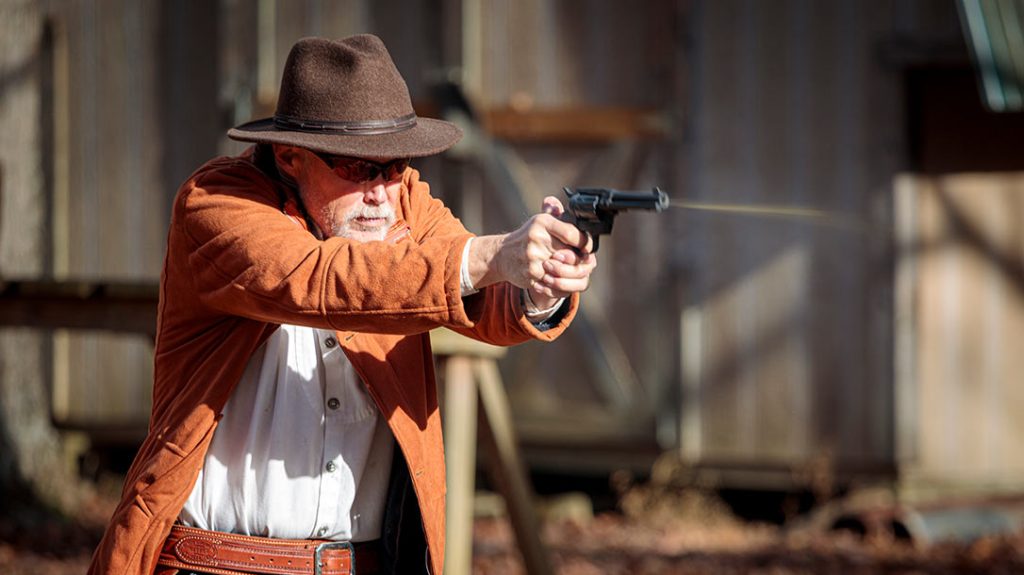
Only one shot strayed into the eight-ring, just barely. I was using a two-handed hold and a flash-sight picture, pulling the trigger as quickly as I could. This wasn’t bad performance, and I didn’t purposely hold high at this distance. There were no keyholes, and my only remark was the short ejector rod did not kick out the .22 WMR empties as readily as it did the .22 LR cases.
In The End
I don’t believe the Diamondback Sidekick could be used in any Cowboy Action Shooting venue. Maybe an easy-going Marshal or RO might overlook it if used single-action-only in a .22 side match? It does have the “Western” flavor looks-wise, and the MSRP is just $320, so it would make an inexpensive plinker.
Diamondback Firearms does need to look into the problems that I’ve encountered in testing, and I have communicated with them. Yes, the little revolver is somewhat homely, but the looks, materials and manufacturing processes do help to keep the price down.
Once they get the bugs worked out, this will be a real beginner’s bargain gun with “cowboy” flair.
For more information on the Diamondback Sidekick go to DiamondbackFirearms.com. And for the El Paso Saddlery rig, visit EPSaddlery.com.
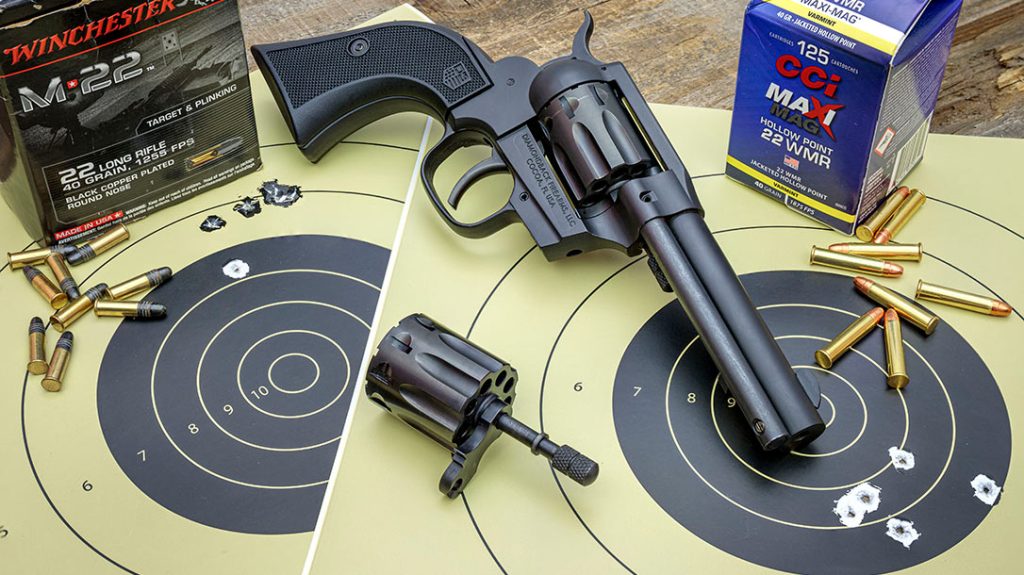
Diamondback Sidekick Specs
Caliber: .22 LR, .22 WMR convertible
Barrel: 4.5 inches
Overall Length: 9.88 inches
Weight: 32.5 ounces (empty)
Grips: Glass-filled black nylon
Sights: Fixed notch rear, blade front
Action: DA/SA
Finish: Black Cerakote
Capacity: 9
MSRP: $320
This article was originally published in the Guns of the Old West Spring 2022 issue. Subscription is available in print and digital editions at OutdoorGroupStore.com. Or call 1-800-284-5668, or email subscriptions@athlonmediagroup.com.
